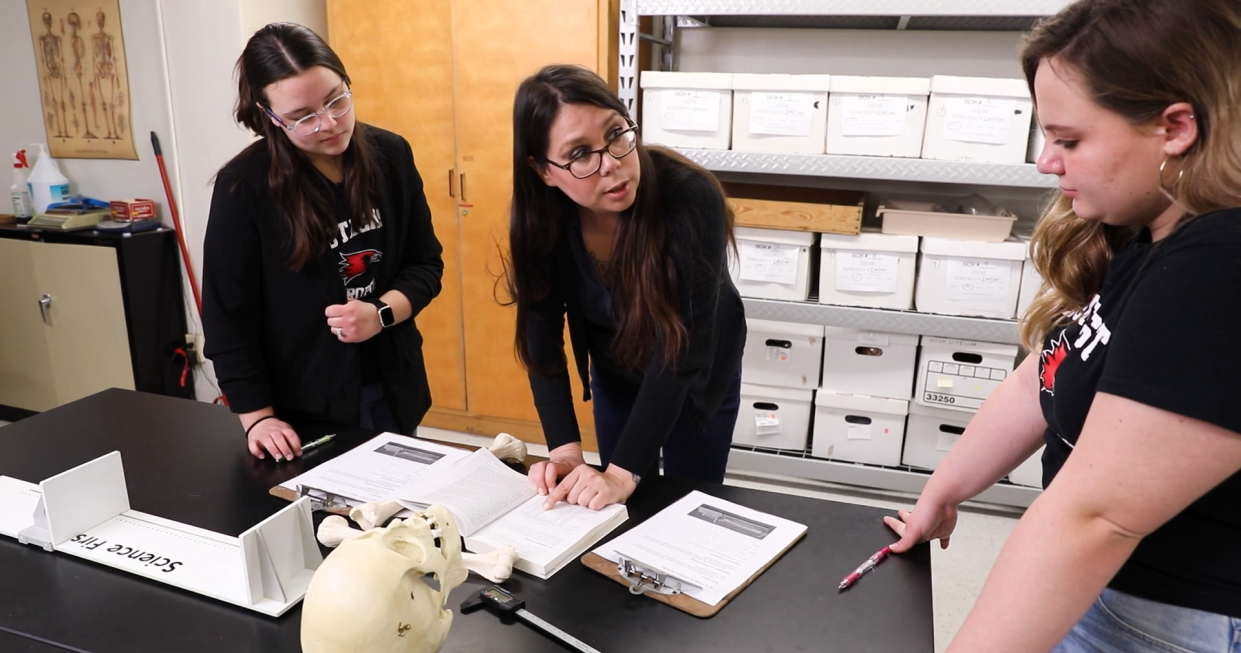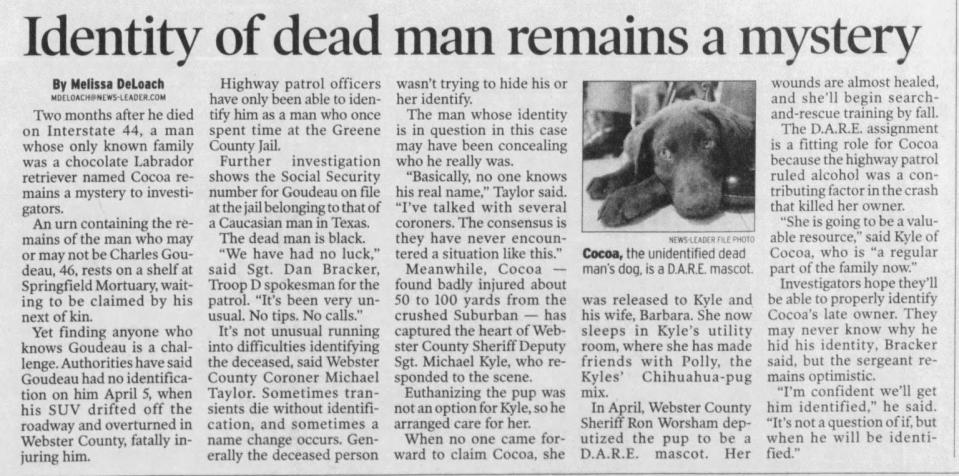Southeast Missouri State students determined to solve 2006 Marshfield mystery

Webster County Coroner Michael Taylor's office no longer holds the unidentified remains of a man killed in a 2006 single-vehicle crash on Interstate 44 near Marshfield, a case that had caught much of the area's attention due to its bizarre circumstances.
Eighteen years after the middle-aged driver was fatally ejected from his vehicle and posthumously discovered to have been living in the Ozarks under a false name, forensic anthropology students at Southeast Missouri State University have been examining his ashes and other DNA samples in their efforts to help solve the mystery.
The Cape Girardeau-based program, led by professor Dr. Jennifer Bengtson, has aided law enforcement in several cold cases involving unidentified human remains throughout Missouri, helping bring closure to families of the deceased.
Late last year, Bengtson and her students helped Lincoln County authorities identify the skeletal remains of Helen Groomes, a teenager who went missing in 1977. With the help of the latest advances in DNA extraction and analysis, they've since turned their attention to the Marshfield man whose only known family appeared to be a puppy that survived the crash.

The program, which has found success despite working in a small lab on a limited budget, doesn't typically work with cremated remains, but opted to take on the challenge.
"I told my students that sometimes you'll encounter cases outside of your comfort zone," said Bengtson, an expert in skeletal remains who has worked at SEMO since 2013. "This is a very interesting mystery that is unique to us."
Bollinger County deputy coroner Megan Cook, a former student in Bengtson's program, recently connected the SEMO program and Taylor, now in his 20th year as Webster County's coroner. Considering the Webster County case has been cold for more than a decade and it wouldn't cost a penny of the county's resources, Taylor was happy to collaborate with SEMO.
"I know they've been successful in a couple of cases, so I am hoping to get the same result," Taylor said of teaming up with SEMO. "I am glad to have the opportunity."
Who was this man?

About 9 p.m. April 6, 2006, a reportedly intoxicated man driving a 1995 Chevy Suburban lost control of his vehicle 5 miles east of Marshfield on Interstate 44 and was ejected.
In his final breaths to law enforcement before dying at the scene, he told a responding officer that someone else was in his vehicle when it crashed, according to past reporting in the Springfield News-Leader.
An injured puppy, a 3-month-old chocolate Labrador retriever, was found with a broken leg and several lacerations about 50 yards from the wreckage. When no one else claimed the puppy, a Webster County deputy adopted the dog, Cocoa, who became the local D.A.R.E. chapter's mascot.
The driver, a Black man in his 40s, wasn't carrying identification at the time of his death and was initially identified as Charles Goudeau. After law enforcement had "no luck" contacting anyone who may have been related to the driver, his remains were cremated. After further investigation, his Social Security number on file at a local jail belonged to a white man in Texas under the same name.
More: Here's how 2 investigators solved the 34-year-old Kelle Ann Workman cold case
It was widely believed that the man was concealing his real identity, which SEMO hopes to find by such methods as using fragments of teeth from cremation to determine where the teeth may have been forming earlier in the man's life.
"He had been in our community for some time and had a job as a bricklayer," Taylor said. "He had gone by this alias for many, many years. He was even arrested and booked under that alias."
'America's silent mass disaster'
Since his 2006 death, the man's DNA information has been inserted into the national NameUs database, a system that currently has info on roughly 14,000 reported cases of unidentified remains.
Bengston, whose students have gone on to get jobs as coroners or work in MSHP crime labs, calls the abundance of unsolved mysteries "America's silent disaster."
"It's such a big problem and nobody really hears about it," she said. "I don't think people know how many unidentified remains there are. In Missouri there are over 100 cases."
Bengtson, who holds a doctorate in anthropology, often selects two proven students from her class to help solve some of those mysteries. Maddy Stiermell and Nora Kilburn are currently working on the Marshfield case.
The mystery man's DNA was successfully extracted and now they're turning their attention to raising funds to cover the costs of genomic sequencing and genealogical research.
"We would really like to see him laid to rest," Taylor said.
Ryan Collingwood covers a wide range of topics for the News-Leader with an emphasis on public safety. He can be reached by phone at 417-258-8174 and email at rcollingwood@news-leader.com. You can also follow Ryan on social media at X.com/rwcollingwood
This article originally appeared on Springfield News-Leader: Missouri students work to solve mystery of Marshfield man's identity


